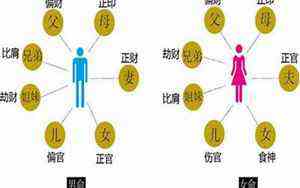
驶向未来的车轮:汽车发明的历史与魅力揭秘
汽车,如今是人们出行的得力伙伴,其便捷性和舒适性让我们的生活大大改善。你知道吗?这辆现代都市中的移动宫殿,其实是一个世纪前的智慧结晶。让我们一起穿越回那个伟大的发明时代,探索汽车如何从梦想变为现实。
19世纪末,一个名叫卡尔·本茨的德国机械工程师点燃了这场变革的火花。1885年,世界上第一辆真正意义上的汽车——梅赛德斯-奔驰一号,诞生于德国科隆,它的出现,如同黎明的曙光,预示着一个全新的交通时代即将来临。据记载,这辆汽车仅能容纳两人,动力源自一台1.0马力的内燃机,时速能达到10公里。这个小小的里程碑,开启了人类历史上第一次真正意义上的私人机动时代。
早期的汽车发明者们,如尼古拉·特斯拉和亨利·福特,他们的创新精神和勤奋努力是推动汽车工业发展的重要动力。特斯拉致力于电动机的研究,而福特则引入了流水线生产,使得汽车的生产效率大幅度提高,价格得以降低,从而让汽车逐渐走进寻常百姓家。到了1908年,福特T型车的问世,更是把汽车的价格降到了普通人可以承受的范围,据统计,每辆T型车的生产成本仅为260美元,这无疑加速了汽车的普及。
汽车的发明过程并非一帆风顺,它伴随着技术挑战、安全问题和环境影响的讨论。每一次改进和创新都让汽车更加安全、高效和环保。电动和自动驾驶技术的兴起,正在引领下一个汽车革命,使汽车成为更加智能和绿色的出行工具。
总结来说,汽车的发明历程是一部科技与人文交织的历史,它见证了人类从梦想到现实的转变,从最初的豪华象征到大众消费品。对于中老年读者来说,了解这个历程不仅能够增加生活中的谈资,还能感受到科技进步带来的生活便利。正是这一个个小小的创新,塑造了我们现在的世界,让我们在享受汽车带来的便利的同时,更加珍视那些推动科技进步的先驱们。
汽车发明过程简写十字
"汽车发明:卡尔·本茨开先河,流水线福特普及大众,电动智能引领未来。"
汽车的发明过程英语作文
The Invention of the Car: A Journey to Modern Mobility
The advent of the automobile, a technological marvel that revolutionized transportation, can be traced back to the pioneering efforts of inventors in the late 19th century. It was in 1885 that German engineer Karl Benz, with his groundbreaking Model T, laid the foundation for the modern car industry. This first horseless carriage, known as the Benz Patent-Motorwagen No.1, had a meager 0.85 horsepower engine, but it marked the dawn of personal mobility.
Following Benz's footsteps, other trailblazers such as Nicola Tesla and Henry Ford pushed the boundaries further. Tesla contributed to the development of electric motors, while Ford introduced the assembly line, dramatically lowering production costs and bringing cars within reach for the average person. In 1908, the Ford Model T, priced at an affordable $260, catalyzed a widespread shift towards automotive ownership.
However, the journey to the car we know today was not without challenges. Innovators grappled with issues of safety, efficiency, and environmental impact, constantly striving for improvements. The introduction of electric and autonomous technologies is now ushering in a new era of smart and eco-friendly transportation.
The invention of cars is a testament to human ingenuity and the power of transformation. It changed the way we live, work, and socialize. Today, after a century of constant evolution, cars have become not just a mode of transportation, but also a symbol of progress and innovation. As we continue to marvel at the cars on our roads, we are reminded of the remarkable stories that led us to this era of automotive excellence.
汽车的发明过程故事视频
但我可以为你描述一个关于汽车发明过程的视频可能的概述:
《车轮上的革命:汽车发明故事》
视频开始于19世纪末的德国,一个发明家卡尔·本茨的实验室背景,展示他亲手制造的第一辆内燃机驱动的汽车——奔驰一号。通过珍贵的历史片段和专家访谈,重现了本茨在坎坷中坚持研发的情景。
画面切换到亨利·福特的工厂,镜头聚焦于流水线生产的自动化场景,展示了他如何通过规模化生产降低了汽车的成本,使之成为大众消费品。福特T型车的诞生过程,以及它对社会经济的影响,是视频的重要章节。
随着技术的发展,视频展示了汽车行业不断迭代,电动车和自动驾驶技术的片段,预示着未来出行的新趋势。同时,也讨论了汽车发明过程中遇到的环保与安全问题及其解决方案。
视频的结尾以现代汽车在世界各地驰骋的画面收束,强调了汽车发明对全球社会的深远影响,以及它如何成为连接过去与未来的关键桥梁。
《汽车的发明过程故事》视频通过生动的画面和引人入胜的故事,为观众呈现了一个既富有历史感又充满创新精神的旅程。
汽车的发明过程和发明意义
汽车的发明过程是一个从想象变为现实的精彩故事,其意义深远且多面。19世纪末,卡尔·本茨、尼古拉·特斯拉和亨利·福特等杰出人物,凭借他们的科学智慧和技术创新,开创了这个新时代。
19世纪80年代,本茨的“奔驰一号”作为世界上第一辆现代意义上的汽车,采用了内燃机,标志着私人交通的诞生,预示着人类出行方式的质变。随后,亨利·福特引入流水线生产,规模化生产降低了汽车成本,使得汽车不再只是富人的奢侈品,而是普遍可及的大众消费品。
自动驾驶和电动车的出现,则将汽车驶入了智能和环保的新纪元。这些技术不仅提高了行车安全性和舒适度,还对环境保护产生了积极影响,减少了碳排放。
汽车的发明意义主要体现在以下几个方面:
1. 社会进步:汽车的普及,极大地提高了人们的生活效率,缩短了城市间的距离,促进了城乡交流,改变了人们的生活方式和工作模式。
2. 经济发展:汽车行业迅速发展,带动了相关产业链,如钢铁、化工、电子等行业的兴盛,成为现代社会的重要支柱产业。
3. 技术创新:汽车的发展推动了科技的进步,包括材料科学、机械工程、电子技术等领域的突破。
4. 环境和可持续性:尽管早期汽车对环境造成了一定影响,但现代汽车制造商正致力于研发更环保、能效更高的车型,对绿色出行的未来起到了推动作用。
总结来说,汽车的发明不仅是个体技术的革新,更是社会进步的象征,它深刻地改变了世界,影响着我们生活的方方面面。
汽车的发明过程本茨简介英语
Karl Benz, a German industrialist and engineer, is often credited as the father of the modern automobile due to his significant contributions to the field during the late 19th century. Born in 1844, in the city of Mannheim, Germany, Benz dedicated his life to the development of motor vehicles that would revolutionize transportation.
In 1885, Benz designed and built the Benz Patent-Motorwagen No.1, commonly known as the "Benz Patent," which was a horseless carriage powered by an internal combustion engine. It was a pioneering achievement, as it featured a high ratio of mechanical efficiency and operational reliability, although its top speed was modest and the passenger capacity limited.
Benz continued to innovate and in 1888, he traveled 100 kilometers (62 miles) from Mannheim to Pforzheim, Germany, aboard his own car, making him the first person to complete a long-distance automobile journey, further solidifying his place in automotive history. His creations laid the groundwork for the gasoline-powered, personal vehicle that we associate with cars today.
Benz's company, Benz Patent-Motorwagen GmbH, later became part of Daimler-Motoren-Gesellschaft, which merged with another automotive pioneer, Gottlieb Daimler's company. The result was Daimler-Benz, the company that now produces the iconic Mercedes-Benz vehicles.
Karl Benz's legacy extends beyond the car itself; he played a crucial role in shaping the modern automotive industry by pushing the boundaries of what was possible in terms of transportation and craftsmanship. His innovative spirit and relentless pursuit of excellence set the stage for the automobile to become an integral part of modern life.
汽车的发明过程简述怎么写
汽车的发明过程是一部科技与创新的史诗。始于19世纪的欧洲,卡尔·本茨、尼古拉·特斯拉和亨利·福特等人陆续涌现,他们的独特视角和勤奋工作开启了这场交通革命。
1885年,卡尔·本茨把内燃机的潜力转化为现实,发明了第一辆实用的汽车——奔驰一号,这是一个历史性的跨越,因为这辆车将四轮驱动系统和内燃机完美结合,预示了私人交通工具的降临。
接着,亨利·福特的出现改变了汽车的制造模式。他的创新是引入了流水线生产,使得大规模生产成为可能,降低了生产成本,使汽车从贵族的奢侈品变为大众消费品。1908年,福特T型车的诞生,其低廉的价格让更多人拥有了汽车,这象征着汽车工业的普及。
电气化和自动化技术的融入,如特斯拉的电动机研发,以及后来的自动驾驶系统,使得汽车变得更智能、更环保。这些发展不仅提高了行车安全性和舒适性,也对全球交通体系和环境保护产生了深远影响。
汽车的发明过程是一个从构思到实用产品的稳健步骤,它见证了科技进步的威力,如何从设想变为实用出行工具,以及如何改变人们的生活方式。从本茨的创新到福特的普及,再到现代汽车的智能化,这个过程展现了人类对移动自由的不懈追求和科技力量的无穷可能。




























